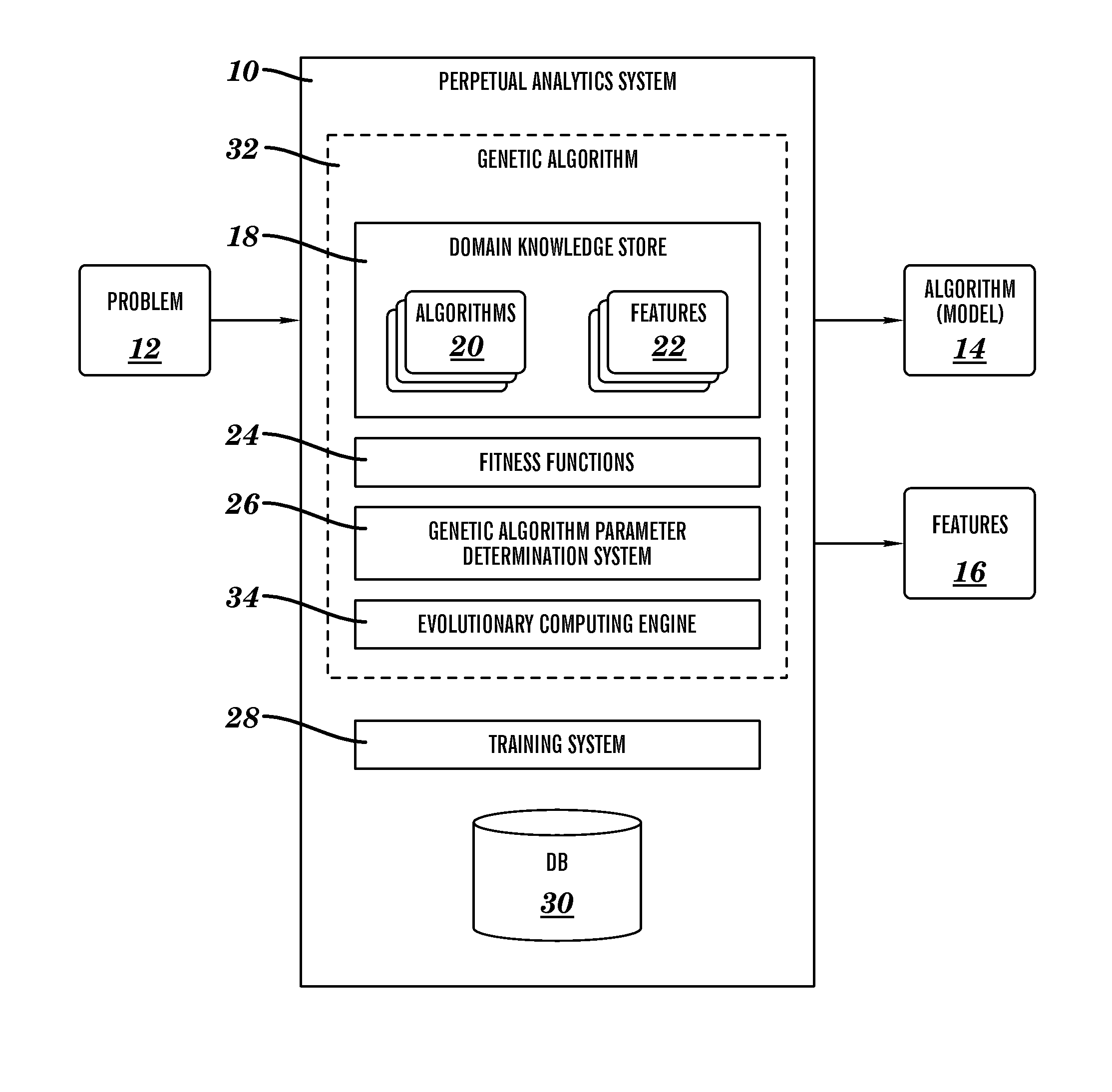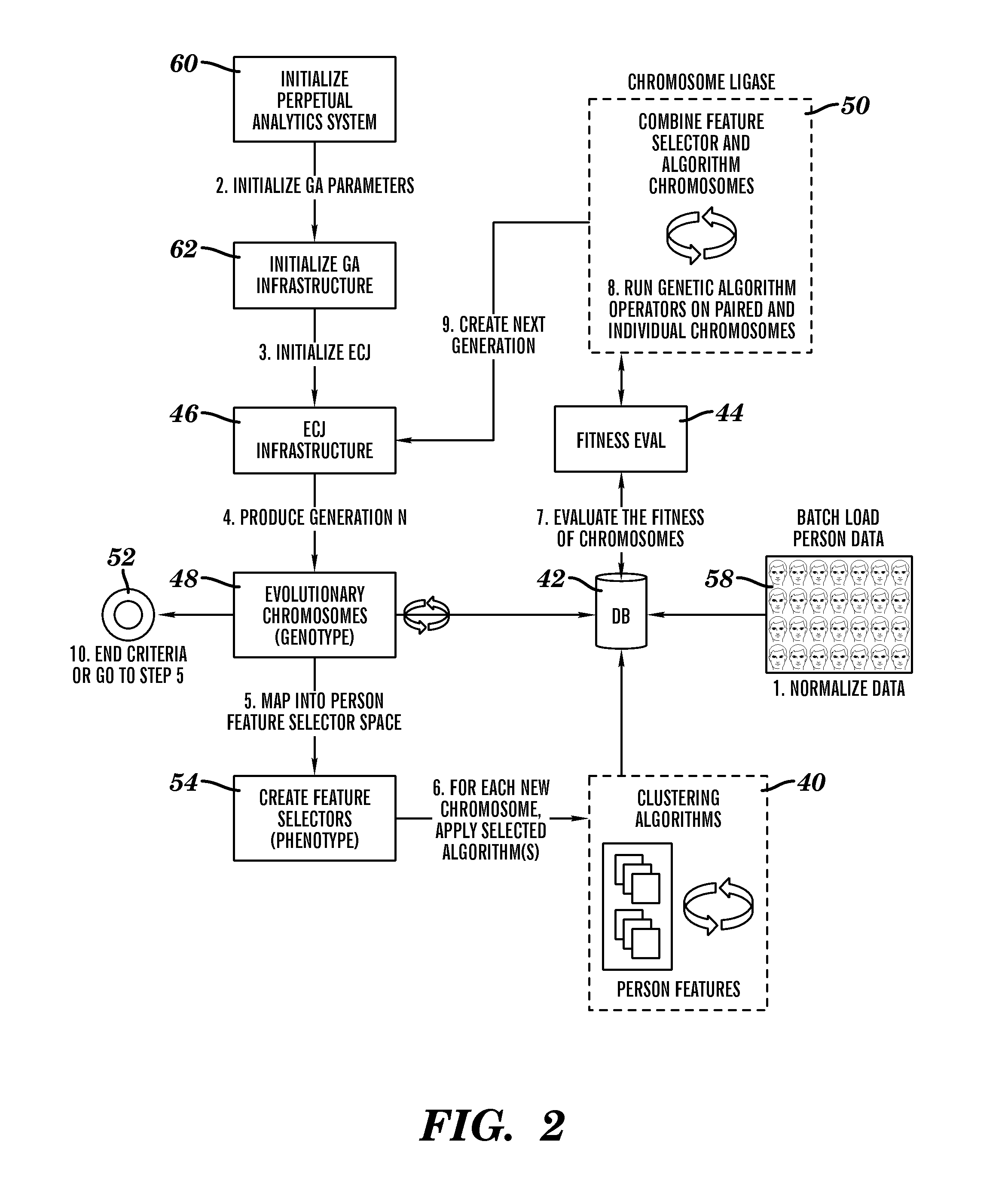Choosing pattern recognition algorithms and data features using a genetic algorithm
a genetic algorithm and pattern recognition technology, applied in the field of perpetual problem analytics, can solve the problems of inability to embrace advanced data analytics, inability to survive in an environment of highly connected and intelligent enterprises, and difficulty in identifying data diversity and dimensionality, and the problem of intractable problems for businesses and governments
- Summary
- Abstract
- Description
- Claims
- Application Information
AI Technical Summary
Benefits of technology
Problems solved by technology
Method used
Image
Examples
Embodiment Construction
[0021]Currently, purely academic, complex and novel algorithms are distilling information into knowledge to solve difficult and real business challenges. However, with the growing number of regressors, classifiers and density estimators, determining which algorithm to implement on a particular problem domain currently requires extensive domain expertise. For example, illustrative algorithms include techniques based on Support Vector Machines (SVM), Neural Networks, Bayesian Belief Networks, numerous clustering algorithms, Hidden Markov Models, Case Based Reasoning, Reinforcement Learning, Regression, Mixture Models, Kernels, etc. The field of statistics produces similarly diverse methods such as Principal Component Analysis, Probability Density Functions, Discrete and Continuous distributions, hypothesis testing, etc. The present invention addresses the process of selecting an analytic algorithm or model and the features of the data of which to process. A framework of feature and al...
PUM
 Login to View More
Login to View More Abstract
Description
Claims
Application Information
 Login to View More
Login to View More - R&D
- Intellectual Property
- Life Sciences
- Materials
- Tech Scout
- Unparalleled Data Quality
- Higher Quality Content
- 60% Fewer Hallucinations
Browse by: Latest US Patents, China's latest patents, Technical Efficacy Thesaurus, Application Domain, Technology Topic, Popular Technical Reports.
© 2025 PatSnap. All rights reserved.Legal|Privacy policy|Modern Slavery Act Transparency Statement|Sitemap|About US| Contact US: help@patsnap.com



